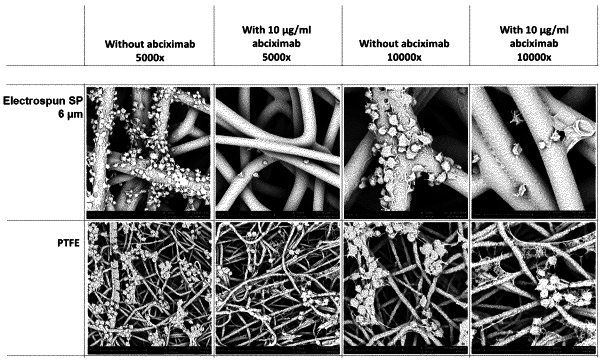| CPC A61F 2/0077 (2013.01) [A61F 2/06 (2013.01); A61L 27/18 (2013.01); A61L 31/04 (2013.01); A61L 31/14 (2013.01); A61L 31/146 (2013.01); A61L 31/148 (2013.01); A61L 31/16 (2013.01); A61L 33/0005 (2013.01); A61L 33/0047 (2013.01); A61L 33/007 (2013.01); A61L 33/06 (2013.01); A61M 1/3655 (2013.01); A61F 2002/0081 (2013.01); A61F 2002/0091 (2015.04); A61F 2210/0004 (2013.01); A61F 2240/001 (2013.01); A61F 2250/0067 (2013.01); A61L 2300/42 (2013.01); A61L 2300/432 (2013.01)] | 13 Claims |

|
1. A method of using a cardiovascular graft to reduce platelet adhesion, comprising:
having a cardiovascular graft designed as a tubular structure with an inner wall made out of a fibrous network of supramolecular compounds having hard-blocks covalently bonded with soft-blocks, wherein the hard-blocks comprise 2-ureido-4[1H]-pyrimidinone (UPy) compounds, wherein the fibrous network is a bioresorbable electrospun non-woven fibrous network with fibers having an average fiber diameter of 1-10 microns, and wherein the tubular structure has an inner diameter between 2-8 mm, and an inner wall thickness of 20-900 micrometers, wherein the soft-blocks comprise a polyurethane, polycarbonate, poly(ortho)ester, polyphosphoester, polyanhydride, polyphosphazene, polyhydroxyalkanoate, polyvinylalcohol, polypropylenefumarate or any combination thereof; and
using the cardiovascular graft to reduce platelet adhesion upon implantation of the cardiovascular graft in a human body.
|